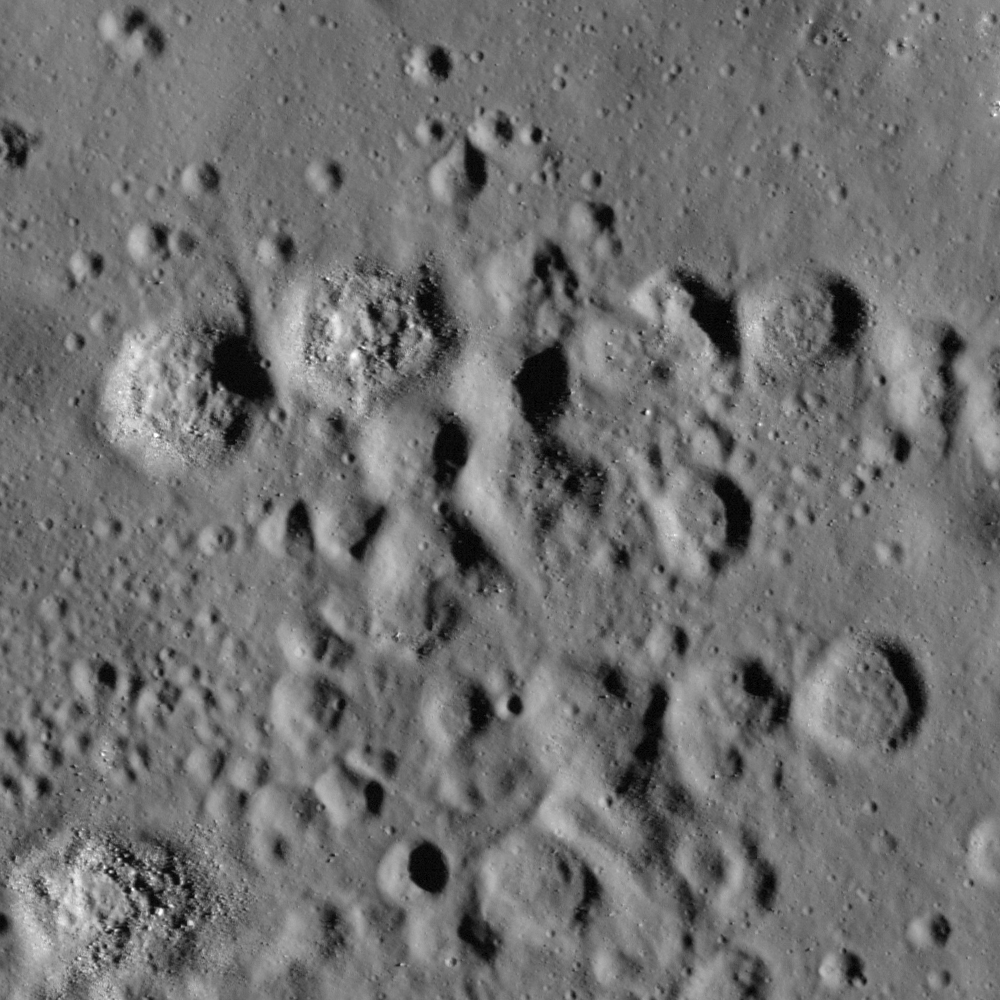
Tsiolkovskiy is a large and spectacular crater on the farside of the Moon (diameter is 180 km). Some time after the impact event that created Tsiolkovskiy, low viscosity lava erupted and flooded the bottom portion of the crater; forming the dark, flat, smooth plain that stands against the bright background of anorthositic highlands. The age of this mare is estimated, through crater-counting techniques, to be about 3.5 billion years old. The initial solid surface of the solidified lava sheet has slowly been dug up and churned by small impact events. These small impacts build up a layer of loose, crushed rock, similar to a soil on the Earth. On the Moon this layer is called regolth. Today's Featured Image highlights a cluster of relatively young and small craters on the Tsiolkovsiky mare (formed in the regolith). These small craters are probably secondary craters formed as material was thrown out of a nearby primary impact. Did you notice that some of these craters have unusual shapes? Instead of the usual bowl shape of small craters, these examples have very flat floors. Why?
Secondary impacts hit the Moon with much lower velocities than primary impacts, so there is less energy (for the same size impactor) available to excavate a crater. Also there is a strength difference between the regolith and the still solid bedrock that it covers. The upper layer is unconsolidated (loose), which is easily excavated and swept out. The lower layer is more solid, and requires more energy to excavate. The flat floor is thus thought to represent the boundary between the regolith and the still solid basalt. By measuring the depth of the flat floor craters, scientists can estimate the depth of the regolith.
Explore these odd craters in the full NAC frame!
Related posts:
Terraced Craters in Aitken Crater, Fresh Bench Crater in Oceanus Procellarum, Just Another Crater?, Bench Crater in Plato
Published by Hiroyuki Sato on 10 January 2012
